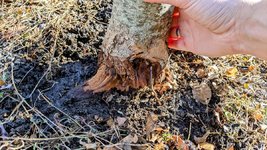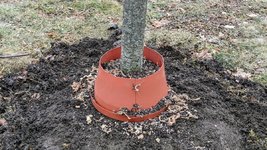RJG2
Omono
I should probably join a different forum for this, but hey, I like you people.
I have a regular apple tree in ground, and just noticed it has been completely girdled at the base this winter... Seems too low for bridge grafts
Any options or cut my losses? I'm a bit sad considering I've grafted 9 apple varieties on it...
Maybe clean up the cut, pile up some dirt, and pray for a giant ground layer?! Bah


I have a regular apple tree in ground, and just noticed it has been completely girdled at the base this winter... Seems too low for bridge grafts
Any options or cut my losses? I'm a bit sad considering I've grafted 9 apple varieties on it...
Maybe clean up the cut, pile up some dirt, and pray for a giant ground layer?! Bah




